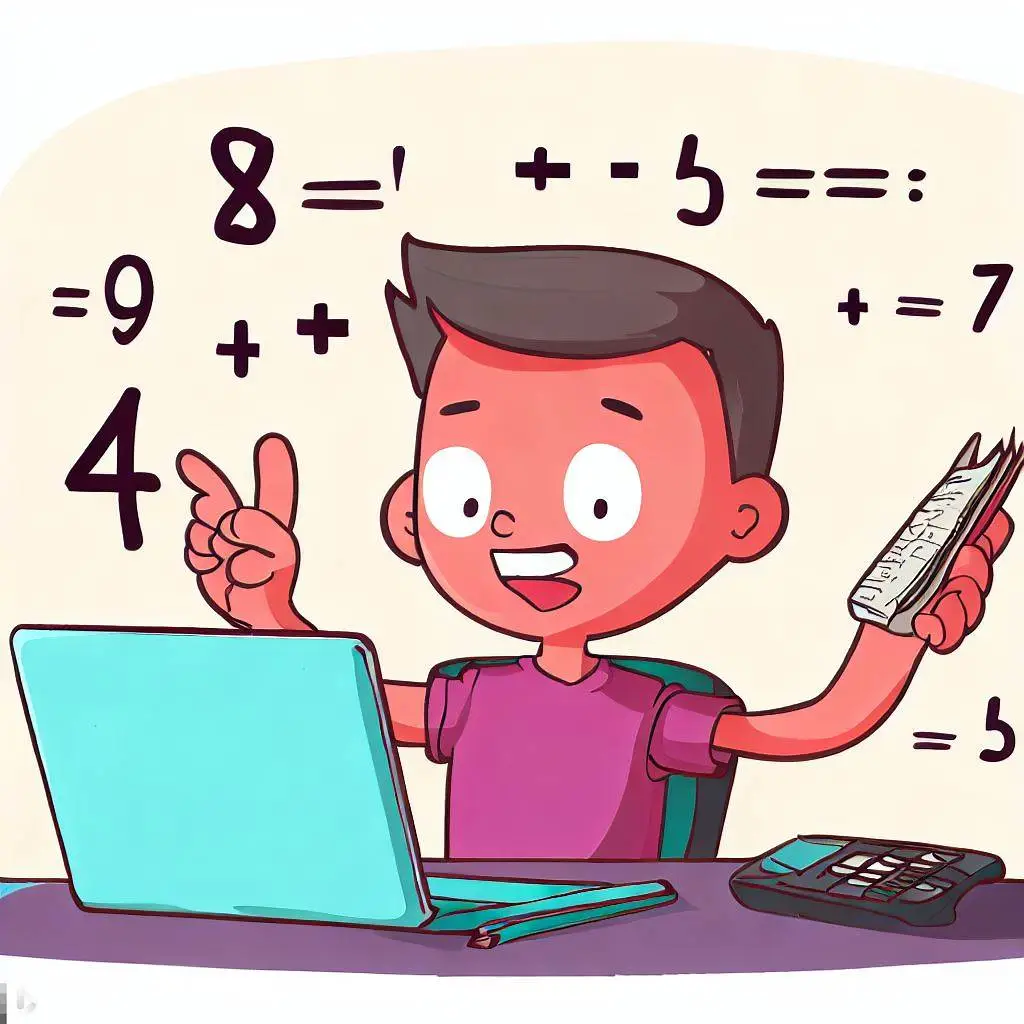Essential Tips to Use When Doing Your Combinatorics Assignment: Permutations and Combinations


Combinatorics, a branch of mathematics that deals with counting, arranging, and selecting objects, can be a challenging subject for many students. Among its fundamental concepts are permutations and combinations, which are essential tools in solving a wide range of problems in various fields, from probability and statistics to computer science and engineering. When faced with a combinatorics assignment, it's important to have a solid understanding of these concepts and a clear strategy for tackling problems. In this blog post, we'll explore essential tips and techniques to help you excel in your combinatorics assignments, with a particular focus on permutations and combinations. If you find yourself needing help with your Combinatorics assignment, consider seeking assistance to ensure you grasp these intricate concepts and achieve success in your studies.
1. Basics of Permutations and Combinations
Understanding permutations and combinations is crucial in combinatorics. Permutations involve arranging objects in a specific order, while combinations deal with selections without considering order. These fundamental concepts lay the foundation for solving various combinatorics problems and are essential for success in assignments and exams.
Permutations
Permutations represent the arrangements of objects in a specific order. When order matters, permutations are used. The number of permutations of 'n' objects taken 'r' at a time is denoted by P(n, r) and can be calculated as:
P(n, r) = n! / (n - r)!
Where 'n!' denotes the factorial of 'n,' which is the product of all positive integers from 1 to 'n.'
Combinations
Combinations, on the other hand, represent selections of objects without regard to their order. The number of combinations of 'n' objects taken 'r' at a time is denoted by C(n, r) and can be calculated as:
C(n, r) = n! / [r!(n - r)!]
These definitions lay the groundwork for solving various combinatorics problems. Now, let's move on to the practical tips for handling combinatorics assignments effectively.
2. Organizing Your Work
Organizing your work is key when tackling combinatorics assignments. Start by carefully reading the problem statement to grasp its requirements and constraints. Listing given information helps maintain clarity. Sketching out a clear plan and using visual aids, when needed, can make complex problems more manageable, improving your problem-solving efficiency.
Read the Problem Statement Carefully
Reading the problem statement with utmost care is the first step towards successfully solving combinatorics assignments. It ensures that you fully comprehend the problem's nuances, whether it involves permutations, combinations, or both. By identifying constraints and special conditions, you avoid misinterpretation and mistakes. This initial attention to detail sets the stage for a well-organized and precise approach, ultimately leading to accurate solutions and a smoother assignment experience.
List the Given Information
Listing the given information in a combinatorics problem is a vital step in maintaining clarity and preventing errors. It helps you establish what is known and what needs to be determined. By creating a clear inventory of the problem's variables and constraints, you minimize the risk of overlooking essential details. This organized approach provides a solid foundation for your subsequent calculations and ensures that you're working with accurate data, enhancing your problem-solving efficiency.
Define your Approach
Defining your approach is a critical strategy in tackling combinatorics assignments. It involves deciding whether permutations or combinations are most suitable based on the problem's requirements. By outlining your plan before diving into calculations, you establish a clear direction for solving the problem. This proactive approach not only saves time but also helps you avoid mistakes, ensuring that your solution aligns with the problem's context and constraints.
Use Diagrams or Charts
Diagrams and charts are invaluable tools for tackling complex combinatorics assignments. They provide a visual representation of the problem, making it easier to understand the relationships between objects and identify patterns. Visual aids can help clarify the problem's intricacies, especially when dealing with multiple variables and conditions. By creating diagrams or charts, you enhance your ability to visualize solutions and can approach problems from a more intuitive perspective, ultimately leading to more accurate and efficient problem-solving.
3. Useful Formulas and Strategies
To effectively do your combinatorics assignment, mastering useful formulas and strategies is essential. Understanding factorial notation is fundamental, as it's at the core of permutations and combinations. Additionally, knowing specialized formulas for permutations with repetition and combinations with repetition expands your problem-solving toolkit. Incorporating these formulas into your strategy empowers you to tackle diverse combinatorics problems with confidence, ensuring success in your assignments. Here are some key formulas and strategies to keep in mind:
Factorial notation
Factorial notation, denoted as 'n!,' plays a central role in combinatorics. It represents the product of all positive integers from 1 to 'n.' In combinatorics assignments, being well-versed in factorial notation is essential for efficiently calculating permutations and combinations. It simplifies complex expressions and enables you to handle large numbers efficiently. Factorial notation is a foundational concept that, when mastered, empowers you to navigate combinatorial problems with ease, ensuring accuracy and precision in your assignments.
Permutations with Repetition
Permutations with repetition are a crucial concept in combinatorics when dealing with scenarios where objects can be repeated in arrangements. The formula for permutations with repetition, P(n; n1, n2, ..., nk), allows you to calculate the number of ways objects can be arranged, taking into account the repetitions of each distinct object. This concept is particularly valuable in various real-world applications, such as password generation or arranging objects with duplicates. Mastering permutations with repetition broadens your problem-solving capabilities, making it easier to tackle diverse combinatorics assignments effectively. In some cases, objects may be repeated in arrangements. The formula for permutations with repetition is: P(n; n1, n2, ..., nk) = n! / (n1! * n2! * ... * nk!)
Here, n is the total number of objects, and n1, n2, ..., nk represent the counts of each distinct object.
Combinations with Repetition
Combinations with repetition are essential in combinatorics, especially when you need to calculate the number of ways to select objects with the possibility of choosing the same object more than once. The formula for combinations with repetition, C(n + r - 1, r), allows you to efficiently solve problems involving scenarios like distributing identical items into bins or forming combinations with replacement. Understanding and applying this concept in your combinatorics assignments expands your problem-solving toolkit and equips you to tackle a broader range of practical and theoretical problems. When objects can be selected multiple times, the formula for combinations with repetition is: C(n + r - 1, r) = (n + r - 1)! / [r!(n - 1)!]
Use of Combinations in Probability
Combinations are fundamental in probability theory, especially in scenarios involving sampling without replacement. The formula P(A) = C(n, k) * (p^k) * ((1-p)^(n-k)) is widely used to calculate probabilities. Here, 'n' represents the total number of trials, 'k' is the number of successful outcomes, and 'p' is the probability of success in a single trial. Understanding how to apply combinations in probability enables you to analyze and make predictions in various real-world situations, making it an essential skill for anyone tackling combinatorics assignments with probabilistic elements.
4. Practice, Practice, Practice
Practice is the key to mastering combinatorics. Start with simple problems and progressively tackle more complex ones. Regular practice enhances your problem-solving skills, improves your speed, and builds confidence. Textbooks, online resources, and creating your problems all contribute to honing your combinatorial expertise, ensuring success in your assignments. Here's how to approach practice effectively:
- Start with simple problems: Commencing your combinatorics practice with simple problems is an effective strategy. These foundational exercises help you grasp fundamental concepts and build confidence. They provide a gentle introduction to permutations, combinations, and related strategies. As your skills develop, you can gradually move on to more complex problems, equipped with a solid understanding of the basics, setting the stage for success in tackling advanced combinatorics assignments.
Use Textbooks and Online Resources
Textbooks and online resources are invaluable for combinatorics practice. They offer a diverse range of problems and solutions that cater to different skill levels. Textbooks provide structured lessons and examples, while online resources, such as tutorials and forums, offer a wealth of supplementary material. Utilizing both sources enhances your understanding of permutations, combinations, and their applications, preparing you for challenging assignments.
Create your Problems
Creating your combinatorics problems is a fantastic way to deepen your understanding of the subject. By devising unique scenarios and applying permutations and combinations concepts, you challenge your own knowledge and creativity. This process not only reinforces your skills but also boosts problem-solving abilities. It's a dynamic approach to practice that can enhance your readiness for complex assignments.
Time Yourself
Timing yourself during combinatorics practice sessions is a valuable technique. Setting time limits mimics real exam conditions, helping you manage your time effectively during assignments and tests. This practice enhances your problem-solving speed and encourages you to streamline your approach, making it easier to handle complex questions within deadlines. Regular timing exercises improve your overall efficiency in tackling combinatorics problems.
5. Seeking Help When Needed
Don't hesitate to seek assistance when grappling with combinatorics assignments. Your instructor is a valuable resource for clarifying concepts and providing guidance. Study groups, online math communities, and tutoring services are additional avenues for help. Collaborative learning and expert advice can help overcome challenges and ensure assignment success. You can get assistance by:
Consult your Instructor
Your instructor is an essential resource for combinatorics assistance. Don't hesitate to seek their guidance when encountering challenging assignments. They can clarify concepts, provide additional examples, and offer valuable insights. Engaging with your instructor demonstrates your commitment to understanding the subject, and their expertise can help you overcome hurdles, ensuring your success in combinatorics coursework.
Study Groups
Joining or forming study groups with peers can be highly beneficial in mastering combinatorics. Discussing problems and sharing different perspectives can lead to valuable insights and innovative problem-solving strategies. In a collaborative setting, you can tackle complex assignments together, learn from each other's approaches, and reinforce your understanding of permutations, combinations, and related concepts, ultimately boosting your confidence and competence in the subject.
Online forums and communities
Online math forums and communities are excellent resources for combinatorics help. Websites like Stack Exchange and Reddit host active math communities where you can ask questions and receive answers from experts and fellow learners. These platforms provide diverse perspectives, explanations, and solutions to a wide range of combinatorics problems, making them valuable tools for improving your understanding and solving complex assignments.
Tutoring Services
Tutoring services offer personalized assistance when you're facing challenges with combinatorics assignments. A tutor can provide one-on-one guidance tailored to your specific needs, addressing your unique questions and concerns. They can clarify concepts, provide step-by-step explanations, and help you develop effective problem-solving strategies. Investing in tutoring services can significantly boost your confidence and competence in combinatorics, ensuring you excel in your coursework.
Conclusion
Combinatorics assignments, especially those involving permutations and combinations, can be challenging, but they are conquerable with the right approach. Understanding the basics of permutations and combinations, staying organized, using the appropriate formulas and strategies, practicing regularly, and seeking help when needed are all essential components of success in this field. Remember that combinatorics is a skill that improves with practice and patience. By following these essential tips and dedicating time to mastering the subject, you'll be better equipped to tackle your combinatorics assignments and excel in your studies. So, the next time you encounter a combinatorics problem, approach it with confidence and a well-structured plan, and you'll be on your way to finding the solution.